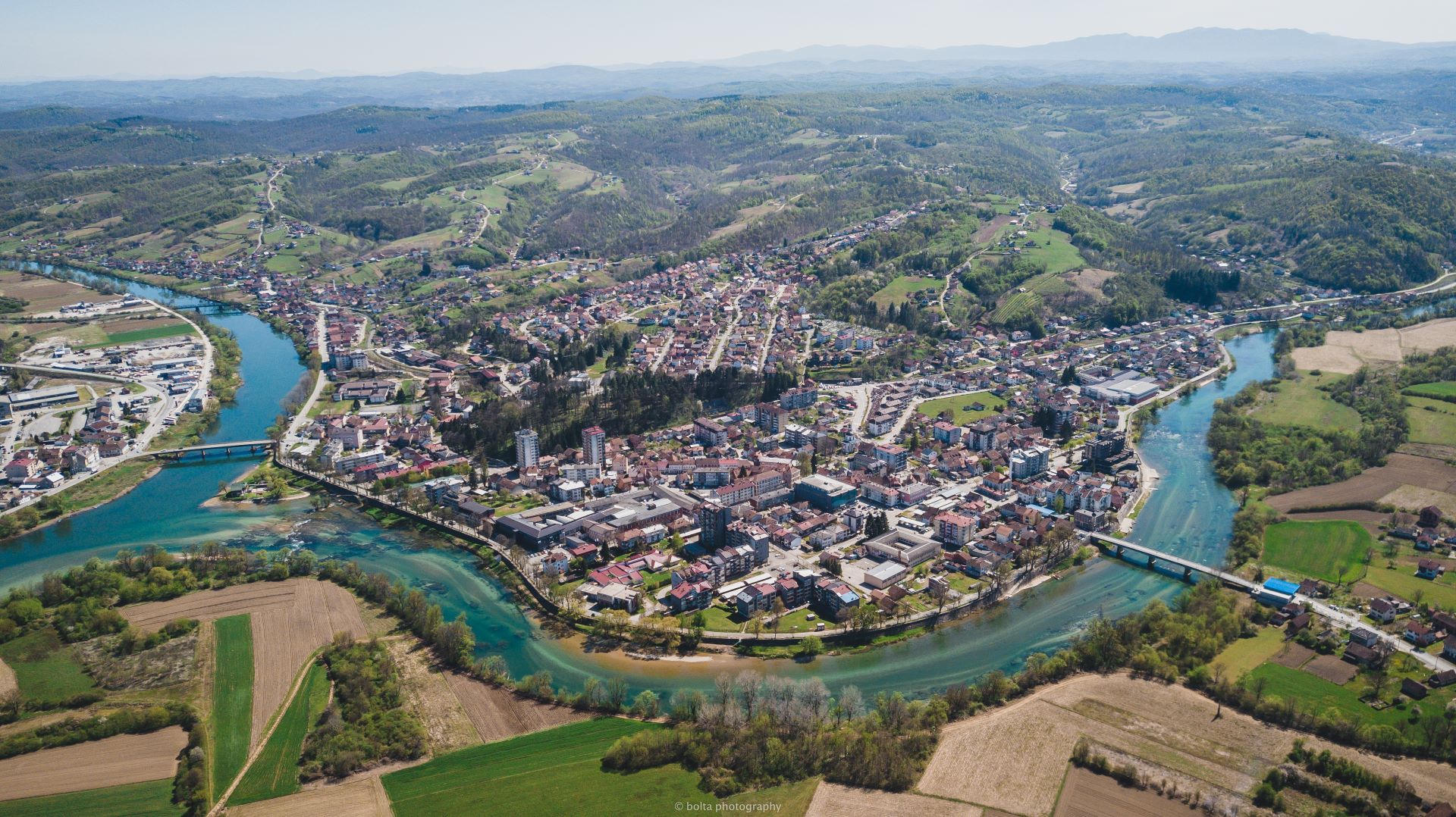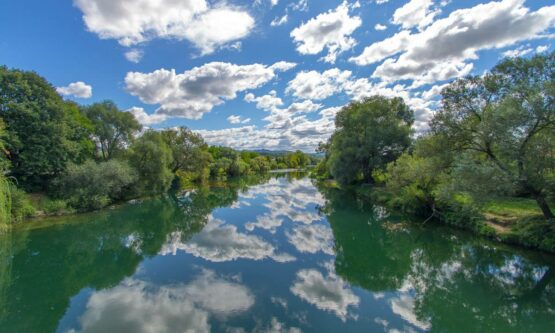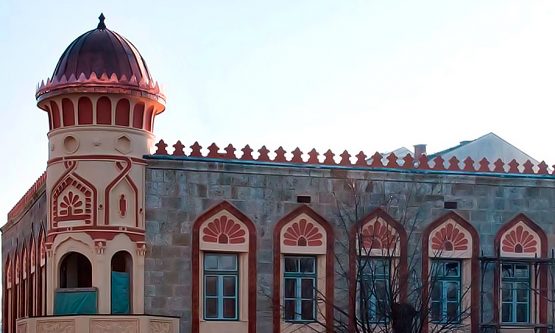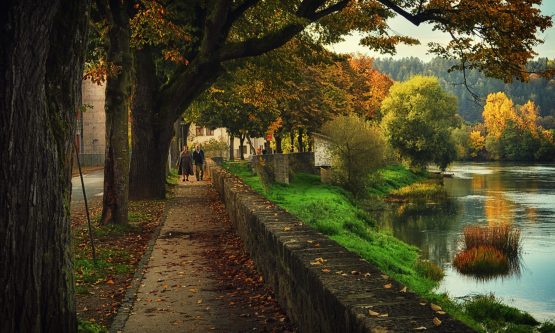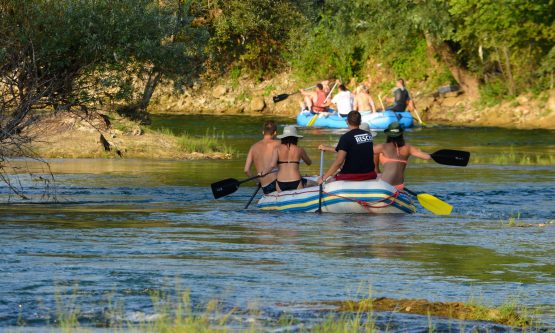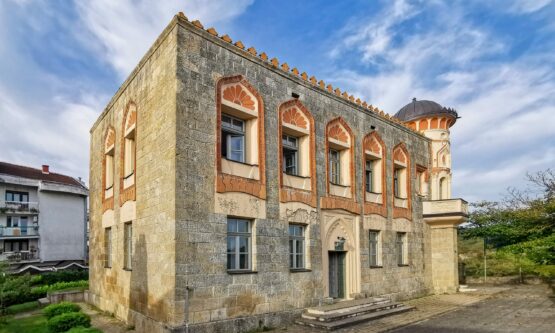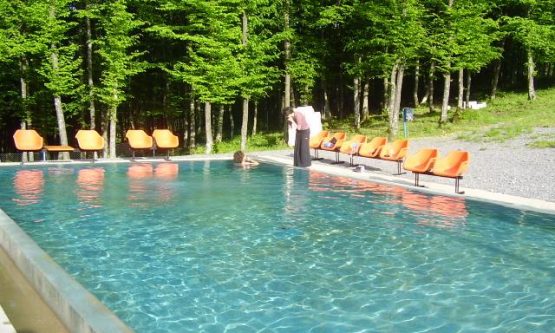Welcome to Novi Grad
Located in the far northwestern part of Republika Srpska, in the border area with Croatia, on the Una and Sana rivers, Novi Grad is one of the oldest and most picturesque towns in the Krajina region. Sung in many songs inspired by the beauties of the Una River, Novi Grad has always been interwoven with natural beauties. Since ancient times, nature has richly endowed this region with every beauty: the murmur of clear waters, the peace of green groves, the fertility of flower fields, the tameness of the rolling hills of Podgrmeč and Potkozarje.
The villages of Novi Grad represent a combination of oases of greenery, peace and an ecologically clean and healthy environment and old rural estates, old log houses and sheds, watermill mills, old weaving rooms, original folk costumes and customs, old musical instruments and gastronomy, and thus represent a true paradise for lovers of nature and villages. .
There are many reasons why you will be especially charmed by visiting Novi Grad, a small town with a big heart. It will give you the opportunity to enjoy its stories and feel the local spirit of the locals, who will always welcome you with open arms.
Culture
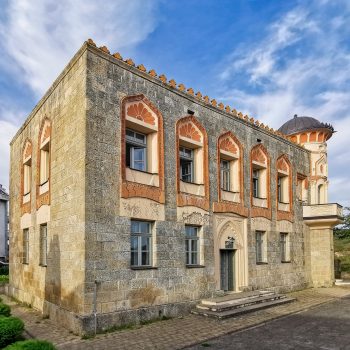
Novi Grad is first mentioned in documents in 1217, although historians believe that the town was founded in 1280. The fact that its wider area was inhabited in ancient times is evidenced by archaeological sites in the village of Donji Rakani and in the valley of the Japra River.
Novi Grad is recognizable by its cultural and historical landmarks:
The Old Town Hall – built in 1888 in the pseudo-Moorish style. The building is a characteristic example of its era – the period of Austro-Hungarian occupation of this area. Regardless of its relatively small dimensions, due to its decorativeness and impressiveness, it is among the most harmonious buildings in the entire area of Bosnia and Herzegovina. In 2006, in Sarajevo, the Commission for the Preservation of National Monuments made a Decision declaring the Historical Building – the Novi Grad Town Hall a national monument of Bosnia and Herzegovina.
The National Library of Novi Grad is the oldest cultural institution in the city. Namely, the library keeps old and valuable books with the seal of the Serbian Reading Room from 1899. The building that houses the library is characterized by decorative architecture from the Austro-Hungarian era, and as such is an exceptional tourist potential of the city. In addition to daily work with readers, the library organizes literary evenings, book promotions, exhibitions dedicated to famous people, and actively participates in the promotion of all cultural events in the municipality of Novi Grad.
The City Quay – One of the biggest attractions of Novi Grad is the famous three-kilometer-long embankment, built of stone, or the famous Novi “Quay”, with an alley of shady chestnut trees and fragrant linden trees. Its construction had several phases: the main works were started by the city administration in the Austrian period from 1903 to 1906, and continued by the royal authorities from 1934 to 1937. The remaining unbuilt interspace with a slightly elevated bank was added after the great floods in 1954 and 1955 by the then government, and the upstream part of the Vidori was built after the construction of the hotel in 1985. After these works, the “Quay” as a famous promenade finally got its wholeness, with an inevitable interruption at the bridge on the Una and the Old Town Hall.
Monument “Mother Partizan” – The monumental monument to Mother Partizan, the work of Marijan Kocković, was erected in 1964 and represents a composition consisting of a bronze statue of a mother partisan, a 10-meter-long stone relief depicting the course of the National Liberation War and a granite cube with engraved verses from the poem “Stojanka Majka Knežpoljka” by Skender Kulenović.
Nature
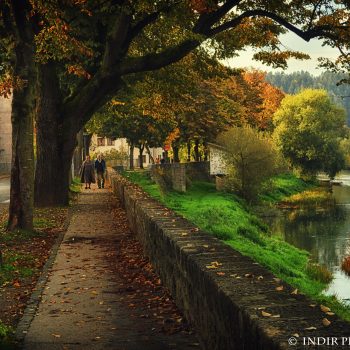
The Una River was named by the ancient Romans, who, upon first seeing its picturesque beauty and hearing the murmur of its waterfalls, exclaimed “UNA”, which in translation would mean “one”, “only” or “unique”. The total length of the Una River is 207 km, and it flows through the Novi Grad municipality for a length of 35 km.
The Una River is recognizable by its picturesque beauty, emerald green water, a large number of tufa formations and the murmur of its waterfalls, which is complemented by untouched nature. You can book one of the accommodation facilities and enjoy the river beauty, which with its 22°C in summer is very pleasant for refreshment in Novi Grad.
One of the adventures you should participate in is the international event “Una Regatta – Boat down the Una” which starts from the entity line and ends in Hrvatska Kostajnica. Every year the number of participants in the event increases with tourists coming from Hungary, Germany, Sweden, Slovenia, the Netherlands and other European countries.
It is possible to go down the calmer course by Una boat, which is recognizable on this river, through the Novi Grad municipality. During the boat trip, it is mandatory to stop and take photos at numerous waterfalls, tufa formations, Una islands, as well as organizing lunch in nature surrounded by Una. You will especially like the beaches along the Una, which will tempt you at every step with their magical colors and break down what you learned in childhood that all rivers are blue, because this is not the case with Una. It is green, blue, turquoise… For those of a slightly braver spirit, this kind of tour can be done by kayak and canoe.
Adventure

The “Branko Ćopić Trail” Marathon is organized by the “Sloboda” Athletic Club in cooperation with the municipalities of Novi Grad and Krupa na Uni. This sports and recreational race is the only marathon held in Bosnia and Herzegovina, and it brings together around 200 athletes from Republika Srpska, Bosnia and Herzegovina, Croatia, Serbia, Macedonia, and other countries. The marathon is held at the end of May with lengths of 42 (marathon) and 21 km (half marathon).
International event “Una Regatta – boat down the Una”
The international “Una Regatta” takes place in two stages: 1. From Blatna to Novi Grad and 2. From Novi Grad to Hrvatska Kostajnica. The event is held at the end of July and gathers around 400 participants from Republika Srpska, Bosnia and Herzegovina, Croatia, Serbia, Slovenia, and other countries. Participants descend the Una River in rubber boats, kayaks, canoes, as well as in the Una boat, which represents a kind of brand of the Novi Grad municipality.
Gastro

In addition to the natural and cultural-historical sights, visitors to Novi Grad will surely be very impressed by the traditional Krajina cuisine. The irresistibly delicious and extremely spicy Krajina dishes are a true pleasure for all the senses.
The inhabitants of Novi Grad enjoy preparing and consuming food, often making traditional specialties according to old family recipes, which are passed down from generation to generation.
The cuisine of Novi Grad’s restaurants is dominated by traditional local dishes, such as cicvara, homemade doughnuts, homemade cheese and kaymak, homemade bread, cevapi, various soups, and the famous marinated Una fish, whose authentic flavors and unique recipes are the result of various foreign influences present in this area over the centuries.
In the production of domestic products, the agricultural cooperative “Agrojapra” stands out in particular, which produces edible cold-pressed oils from sunflower and pumpkin, integral wheat, corn, pumpkin, buckwheat and rye flour, as well as dried fruit and apple chips.
Tourist organization of Novi Grad
Old City Hall
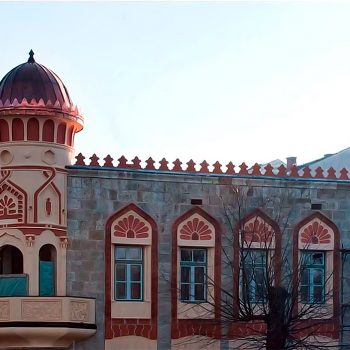 Built in 1888 in a pseudo-Moorish style, this building is a typical example of its era – the period of the Austro-Hungarian occupation of this area. Despite its relatively small size, due to its decorativeness and impressiveness, it is among the most harmonious buildings in the entire area of Bosnia and Herzegovina. In 2006, the Commission for the Preservation of National Monuments in Sarajevo passed a decision declaring the historical building – the Novi Grad City Hall a national monument of Bosnia and Herzegovina. Today, the Museum and the Tourist Organization of the Novi Grad municipality are located in the building of the Old City Hall.
Built in 1888 in a pseudo-Moorish style, this building is a typical example of its era – the period of the Austro-Hungarian occupation of this area. Despite its relatively small size, due to its decorativeness and impressiveness, it is among the most harmonious buildings in the entire area of Bosnia and Herzegovina. In 2006, the Commission for the Preservation of National Monuments in Sarajevo passed a decision declaring the historical building – the Novi Grad City Hall a national monument of Bosnia and Herzegovina. Today, the Museum and the Tourist Organization of the Novi Grad municipality are located in the building of the Old City Hall.
Una River
 The Una River was named by the ancient Romans, who, upon first seeing its picturesque beauty and hearing the murmur of its waterfalls, exclaimed “UNA,” which in translation would mean “one,” “only,” or “unique.” The total length of the Una River is 207 km, 1 and it flows through the Novi Grad municipality for a length of 35 km. Throughout its flow through this municipality, the Una flows as a border river between Bosnia and Herzegovina – Republika Srpska and the Republic of Croatia. The largest tributary of the Una in this area is the Sana River, followed by the Vojskova River, which is the second largest river in the Novi Grad municipality. The breathtaking experience is recognizable by the picturesque beauty, the emerald green color of the water, the large number of tufa formations, and the murmur of its waterfalls, which is complemented by untouched nature.
The Una River was named by the ancient Romans, who, upon first seeing its picturesque beauty and hearing the murmur of its waterfalls, exclaimed “UNA,” which in translation would mean “one,” “only,” or “unique.” The total length of the Una River is 207 km, 1 and it flows through the Novi Grad municipality for a length of 35 km. Throughout its flow through this municipality, the Una flows as a border river between Bosnia and Herzegovina – Republika Srpska and the Republic of Croatia. The largest tributary of the Una in this area is the Sana River, followed by the Vojskova River, which is the second largest river in the Novi Grad municipality. The breathtaking experience is recognizable by the picturesque beauty, the emerald green color of the water, the large number of tufa formations, and the murmur of its waterfalls, which is complemented by untouched nature.
Sana River
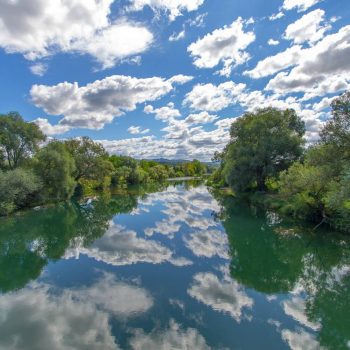
The Sana River originates from three strong karstic springs in the karstic plateau near the village of Donja Pecka – Jasenovi Potoci, near Šipovo. After about 1.5 km, these three springs merge into one stream. In its lower course, from the source all the way to Ključ, the Sana is an extremely cold and clear river. From Ključ to Sanski Most, it can be described as a transitional river, and in that part of the course, in the place of Vrhpolje, the Sana receives its largest tributary, the Sanica River, which flows from the direction of Grmeč. From Sanski Most onwards, the Sana loses all the characteristics of a karstic river and takes on the characteristics of a normal river flow.
All the way to Prijedor, the course of the Sana River maintains a direction from south to north. In Prijedor, the Sana makes an angle of exactly 90 degrees and flows west towards Novi Grad. 300m before it changes its course to the west, its right tributary, the Gomjenica, flows into the Sana. At the very entrance to Novi Grad, there is the confluence of the Sana into the Una, and along with the Una and Neretva, it is considered one of the most beautiful and cleanest rivers in Bosnia and Herzegovina.
Ljesljani
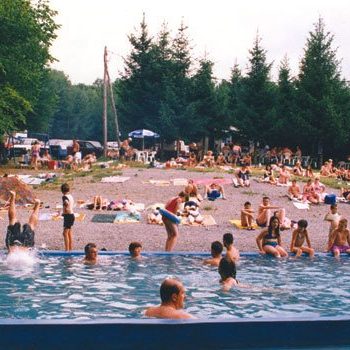 The natural water from SRC “Ljesljani” is classified as a sodium chloride hydrocarbonate hypothermal highly alkaline water, and the current source has a temperature of 31-35 °C. It has been proven that the healing properties of the Lješljani Spa date back to the Roman period, and evidence of its first use dates back to 1878, when the Austro-Hungarians first tested this water in Vienna. There are no written documents about the healing properties of the water, but there are several legends among the people. One legend says: “Once upon a time there was a farmer who had a horse that was attacked by a terrible skin disease. As this farmer, like most of the population, was poor, he was unable to find any cure for it, so to his great sorrow he let it go at the mercy of the forests of Potkozarje. Wandering through the forest, the horse came across the Ljesljani water spring and after some time returned to its master alive and well.”
The natural water from SRC “Ljesljani” is classified as a sodium chloride hydrocarbonate hypothermal highly alkaline water, and the current source has a temperature of 31-35 °C. It has been proven that the healing properties of the Lješljani Spa date back to the Roman period, and evidence of its first use dates back to 1878, when the Austro-Hungarians first tested this water in Vienna. There are no written documents about the healing properties of the water, but there are several legends among the people. One legend says: “Once upon a time there was a farmer who had a horse that was attacked by a terrible skin disease. As this farmer, like most of the population, was poor, he was unable to find any cure for it, so to his great sorrow he let it go at the mercy of the forests of Potkozarje. Wandering through the forest, the horse came across the Ljesljani water spring and after some time returned to its master alive and well.”


